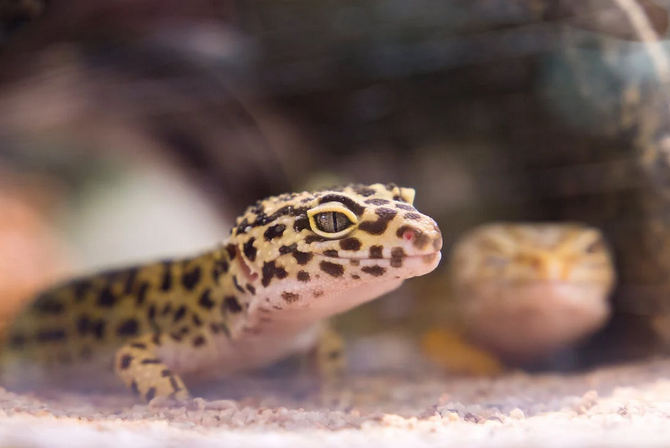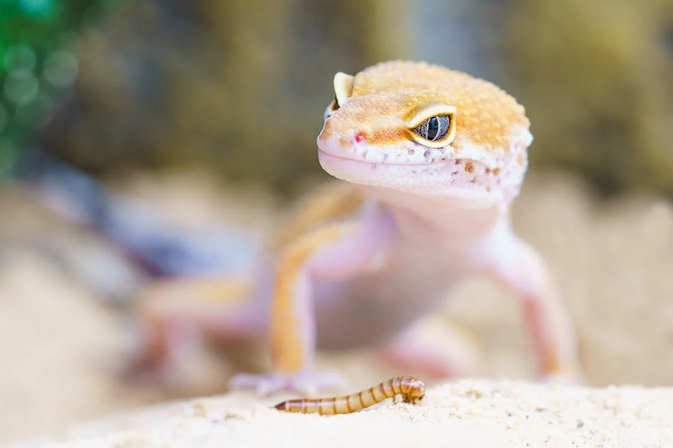Diseases That Can Affect Your Leopard Gecko and How to Combat Them

Hey there, fellow leopard gecko enthusiasts. Today, we dedicated this post as a way to celebrate reptile appreciation day this coming October. These fascinating creatures make for wonderful pets with their unique personalities and mesmerizing beauty. However, just like any living being, leopard geckos can easily get infected by certain diseases, which can ruin their health and well-being.
But fret not, as today, we’re here to equip you with the knowledge and tools necessary to combat these potential ailments. From phalangeal dysecdysis to chronic malnutrition and bacterial dermatitis, we’ll explore some common diseases that might trouble your scaly friend.
Phalangeal Dysecdysis
Phalangeal dysecdysis, despite its tongue-twisting name, is a condition that can affect our leopard geckos. But what exactly is it? Well, phalangeal dysecdysis refers to the abnormal shedding of the skin on their tiny toes and feet. You may notice that your gecko’s toes have an irregular appearance or appear swollen during this condition.
So, why does phalangeal dysecdysis occur? It can be caused by various factors, such as low humidity levels in their habitat or improper shedding due to inadequate moisture. Sometimes, even injuries or infections can lead to this condition. That said, providing a moist hide within their tank can also aid in proper shedding.
Chronic Malnutrition

This occurs when they do not receive a proper and balanced diet, lacking essential nutrients needed for their growth and well-being. Leopard geckos are insectivores, which means they primarily eat insects such as crickets, mealworms, and dubia roaches. However, solely feeding them one type of insect can lead to nutritional deficiencies over time.
It’s crucial to provide variety in their diet by offering different types of insects or even supplementing with calcium powder or multivitamin dust. Inadequate nutrition can result in stunted growth, weakened immune system, skeletal abnormalities, reproductive issues, and even death. So, ensure your leopard gecko receives the necessary nutrients it needs.
Bacterial Dermatitis
This skin infection happens when bacteria enter the body through small cuts in the skin, leading to inflammation and infection. This condition can be quite uncomfortable for your gecko and may cause them to become lethargic, lose their appetite, and develop redness or swelling on their skin.
To combat this skin issue, maintain proper hygiene for your leopard gecko. Regularly cleaning their enclosure and ensuring that their environment is kept clean can help prevent the growth of harmful bacteria. Additionally, providing a clean water source for drinking and soaking will also minimize the risk of infection.
Tail Necrosis
Leopard geckos have long, slender tails that play a crucial role in their balance and communication. Unfortunately, these delicate appendages are susceptible to a condition called tail necrosis. Tail necrosis occurs when the blood supply to the tail is compromised, leading to tissue death and potential amputation.
There are several factors that can contribute to tail necrosis in leopard geckos. Trauma, such as getting caught in cage accessories or being bitten by another gecko, can damage the blood vessels and result in necrotic tissue. Poor husbandry practices, including unsanitary living conditions or inadequate temperature gradients within the enclosure, can also increase the risk of this condition.
How to Prevent These Diseases
Prevention plays a vital role in keeping your pet leopard gecko healthy and disease-free. So ensure that the enclosure has appropriate temperature gradients (hot basking spot around 90°F/32°C) along with hiding spots for thermoregulation. And, of course, maintain proper hygiene and offer a balanced diet. Keep an eye on your gecko’s behavior, appetite, and shedding patterns.


Leave a Comment